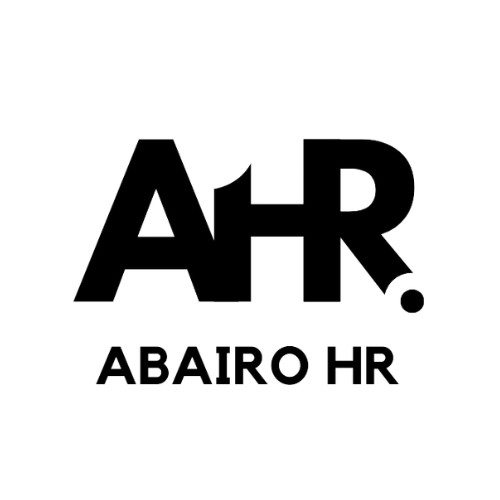How to Create a Winning Employee Rewards Program
A well-designed employee rewards program enhances motivation, boosts productivity, and improves retention. But what makes a rewards program truly effective?
Employee recognition and rewards programs are critical to fostering a motivated and engaged workforce. A strong program goes beyond monetary compensation—it focuses on meaningful appreciation, career growth, and personalized incentives that make employees feel valued.
In this blog, we’ll explore the key components of a winning rewards program, innovative strategies, and real-world applications that drive long-term success.
1. Align Rewards with Company Values
When rewards reflect company values, they reinforce desired behaviors and culture.
Best Practices:
- Develop rewards linked to organizational goals.
- Recognize employees who embody company values.
- Ensure transparency in reward distribution.
Example: A software company created a “Values Champion” award, where employees voted on peers who best represented the company’s mission, fostering a sense of community and shared purpose.
2. Offer Personalized Rewards
A one-size-fits-all approach to rewards can feel impersonal. Personalized rewards cater to individual preferences, increasing impact.
Best Practices:
- Allow employees to choose from a variety of rewards.
- Conduct surveys to understand preferences.
- Recognize both small and big achievements.
Example: A healthcare company introduced a “Custom Perks” system, where employees could select from travel vouchers, wellness programs, or skill-building courses.
3. Foster Peer-to-Peer Recognition
Recognition from colleagues can be as meaningful as recognition from leadership.
Best Practices:
- Implement a digital recognition platform.
- Encourage employees to nominate each other for rewards.
- Celebrate achievements in company-wide meetings.
Example: A marketing firm used a social recognition app where employees could send “Thank You” badges, leading to stronger team bonds and collaboration.
4. Implement Experiential Rewards
Experiences create lasting memories and enhance job satisfaction more than monetary rewards alone.
Best Practices:
- Provide unique experiences such as team retreats or VIP event access.
- Allow employees to earn experiential rewards based on performance.
- Rotate experiential rewards to maintain excitement.
Example: An e-commerce company rewarded top-performing teams with exclusive access to industry conferences and skill-building retreats.
5. Combine Monetary and Non-Monetary Rewards
A balanced mix of rewards keeps employees motivated in different ways.
Best Practices:
- Offer performance-based bonuses alongside creative non-monetary perks.
- Recognize efforts with public appreciation.
- Ensure fairness and inclusivity in rewards.
Example: A finance company introduced an annual “Impact Award,” providing both a cash prize and an opportunity for winners to pitch ideas directly to senior leadership.
6. Provide Career Growth and Learning Incentives
Employees value career development just as much as financial compensation.
Best Practices:
- Reward employees with access to professional courses.
- Offer leadership training for high-performing individuals.
- Provide tuition reimbursement programs.
Example: An engineering firm launched a “Skill Accelerator” program, where employees who completed additional certifications received promotions or specialized project opportunities.
7. Recognize Employees in Real-Time
Immediate recognition reinforces positive behaviors and boosts morale.
Best Practices:
- Use digital tools to enable instant recognition.
- Encourage managers to acknowledge achievements promptly.
- Incorporate real-time recognition into daily workflows.
Example: A customer service company introduced a “Spot Bonus” system, where managers could instantly reward employees with digital gift cards for exceptional service.
8. Encourage Team-Based Rewards
Team-based rewards promote collaboration and strengthen workplace relationships.
Best Practices:
- Recognize team achievements alongside individual rewards.
- Offer group experiences like off-site retreats or team dinners.
- Encourage cross-departmental collaboration through team incentives.
Example: A gaming company rewarded high-performing project teams with an all-expenses-paid weekend retreat, boosting morale and team cohesion.
9. Make Rewards Transparent and Inclusive
Transparency ensures fairness and prevents disengagement caused by perceived favoritism.
Best Practices:
- Clearly communicate how rewards are earned.
- Ensure rewards cater to diverse employee needs.
- Regularly review and adjust reward structures based on feedback.
Example: A logistics company introduced a points-based reward system where employees accumulated points for performance milestones and redeemed them for prizes of their choice.
10. Continuously Evolve Your Rewards Program
Employee preferences and workplace dynamics change over time. Regular updates keep rewards relevant.
Best Practices:
- Gather employee feedback frequently.
- Monitor program effectiveness through engagement metrics.
- Experiment with new and innovative reward types.
Example: A legal firm conducted annual feedback sessions on their rewards program, leading to the introduction of sabbaticals as a long-term service recognition.
A winning employee rewards program is more than just perks—it’s a strategic investment in your workforce’s happiness and productivity. By implementing thoughtful and innovative rewards, organizations can foster a more engaged and motivated team.
“Looking to revamp your employee rewards program? Start implementing these strategies today and watch your workplace thrive!”
Let’s Start Something new
Say Hello!
Let’s get the ball rolling! Just fill out the details below, and one of our HR experts will get back to you faster than you can think of an HR question.
